Healthy 7-Day South Indian Diet Chart For Weight Loss
Bless your body with a healthy, balanced diet and wholesome eating habits.

Image: StyleCraze Design Team
South Indian cuisine is wonderful! Just the smell of curry leaves, hearing mustard seeds pop, and the thought of eating a nutty chutney with perfectly cooked dosas and hot pickles makes your mouth water. However, it is very easy to overeat any South Indian food, resulting in weight gain. That is why we have come up with a South Indian diet chart for weight loss.
Ivana, a YouTuber, tried out South Indian meals for one day and shared her experience. She said, “Basically, it was an excuse to just eat as much South Indian food as I possibly can. I’m not obsessed with South Indian food. You are. Oh, the girl ate, and she left no crumbs (i).”
The South Indian diet includes a variety of flavors and nutrient-rich ingredients, such as lentils, vegetables, and whole grains. Consuming them in moderation can help you with sustainable weight loss. Moreover, you do not starve yourself with salads and protein powders for weight loss. Simply change your eating habits a little. We have made a South Indian diet chart, as well as items to consume and avoid and lifestyle modifications to make, in this article.
But first, you must complete the following checklist.
 Quick Tip
Quick TipIn This Article
Things To Do Before Going On The New South Indian Diet
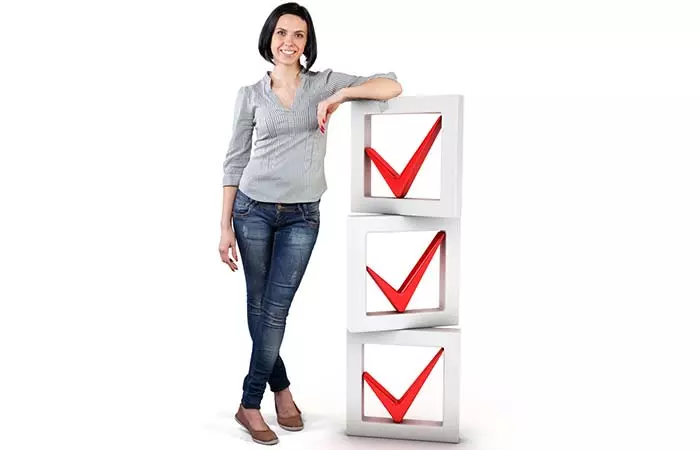
- See Your Doctor
Your doctor will calculate your BMI and BMR, monitor your blood pressure and current medication and then determine if you should lose weight at all and if you do, why you should. This will help you do the following.
- Write Down Your Weight Loss Goal
Unless you write your weight loss goal down, you will not be able to adhere to it. Meal planning and execution are crucial to losing weight, just like setting an exercise routine. Give yourself a deadline of one week and write down how much weight you want to lose. For example, “I want to lose 1.5-2 kgs in one week.”
Well, does this seem like a slow weight loss? Well, here’s what you need to know.
- Keep Your Weight Loss Goals Realistic

Is it possible to lose 10 kgs in one week? Maybe. You will lose a lot of water weight and muscle mass, which, in turn, will slow your metabolism down. So, basically, you will regain the weight, and your immunity will take a hit. Fad diets are called fads for a reason. Slow weight loss is the best – it will give you time to adjust to a new lifestyle and keep you focused.
Finally, here’s the last but the most important thing you must do.
- Kitchen Makeover
Stock your fridge and cabinets with whole foods. Use ragi instead of white rice. Buy whole pulses, multigrain atta, quinoa, pure clarified butter, whole-fat milk (yes!), veggies, eggs, fatty fish, and chicken breast (if you are a non-vegetarian), nuts, etc. Toss all the junk food out, including the homemade deep-fried ones, refined sugar, store-bought or homemade sweets made with refined sugar, vegetable oil, etc. We will see more about it later in the article. Now, you are ready to start your new and revised diet. Here you go!
One advantage of the south Indian diet is that you can modify it to your liking, nutritional needs, and dietary preferences.
The following graph showcases the diverse eating habits and dietary requirements in a sample population. According to this data, most people follow a flexitarian diet (rarely consume meat). These people can follow the south Indian diet with ease if they are on a vegetarian diet, as it has many vegetarian food options.
Type Of Diet vs Corresponders
Source: Keep Yourself Alive”: From Healthy Eating to Progression to Orthorexia Nervosa A Mixed Methods Study among Young Women in the NetherlandsKey Takeaways
- A South Indian diet for weight loss consists traditional South Indian foods with whole grains, lentils, fruits, and vegetables.
- The diet rejects junk foods like fried, processed, and high-calorie foods.
- A typical South Indian breakfast includes idli, dosa, or uttapam, and lunch and dinner usually involves rice, lentils, yogurt, and vegetables—all almost non-oily foods.
- The diet should be in alignment with the person’s calorie requirements and medical conditions, if any.
7-Day South Indian Diet Chart For Weight Loss
Day 1 (1500 Calories)
Meals | What To Eat | ||
|---|---|---|---|
Early Morning (6:00 a.m.) | 1 cup warm water with juice of half a lime and honey | ||
Breakfast (7:00 a.m.) | 3 millet idlis + 1 small bowl sambar or 2 egg whites + ½ a small bowl of peanut and coconut chutney + 1 cup green tea | ||
Mid Morning (10:00 a.m.) | 1 medium apple or a small bowl of grapes | ||
Lunch (12:30-1:00 p.m.) | 2 ragi balls + Vegetable curry + 1 cup rasam + 1 cup buttermilk | ||
Post-Lunch (3:30-4:00 p.m.) | 1 cup green tea + 2 Marie biscuits | ||
Dinner (7:00 p.m.) | 2 rotis + 1 medium bowl of vegetable curry + 1 cup spinach daal + 1 small bowl of curd | ||
Bed Time (10:00 p.m.) | 1 cup warm milk with a pinch of turmeric |
Total Calories Consumed –
1489
Why This Works
This 1500-calorie diet for day 1 helps boost your energy and lose weight. Warm water with lime and honey kick starts your metabolism, maintains the internal pH, and boosts your immunity. Millet idlis are super healthy, and peanut and coconut chutney will provide your body with healthy fats and protein. Choose sambar or egg whites as a source of lean protein, which will keep you active throughout the day. Green tea helps flush toxins out and keeps your hunger pangs at bay (1). Apples or grapes are good sources of vitamins and minerals (2), (3). Ragi balls provide energy, calcium and fiber (4). Have any vegetable curry and a cup of rasam to support your body functions. Buttermilk and curd strengthen the digestive system and immunity (5). Marie biscuits, though not healthy, will help you relax with a cup of green tea. Avoid having white or brown rice for dinner, and consume no more than two rotis. You can have one extra cup of daal if you feel hungry. Drinking warm milk with turmeric will prevent you from snacking on junk and help you sleep better.
You should exercise along with focusing on healthy eating to shed the fat. Here’s your workout plan for Day 1.
Day 1 Exercise Plan
- Warm-up – 10 mins
- Rope jumping – 3 sets of 50 reps
- Crunches – 2 sets of 15 reps
- Bicycle crunches – 2 sets of 15 reps
- Leg-up crunches – 2 sets of 15 reps
- Sit-ups – 2 sets of 15 reps
- Russian twist – 2 sets of 25 reps
- Flutter kicks – 2 sets of 30 reps
- Scissor legs – 2 sets of 15 reps
- Leg raises – 2 sets of 15 reps
- Brisk walk – 10 minutes
- Cool off by doing some stretching exercises
How You Will Feel By The End Of Day 1
By the end of Day 1, you will feel refreshed and active. Adhering to the diet plan will not be a problem as you will be consuming healthier versions of familiar foods in adequate amounts. If you exercise after a long time, you will experience body pain, and that is why you need to warm up and cool off properly before and after exercising. Make sure you don’t overdo the exercises. Check with your doctor to know if you are allowed to do vigorous cardio or weight training before you start exercising.
Day 2 (1400 Calories)
Meals | What To Eat | ||
|---|---|---|---|
Early Morning (6:00 a.m.) | 1 cup warm water with juice of half a lime and honey | ||
Breakfast (7:00 a.m.) | 2 medium rava dosas + tomato and onion chutney + 1 cup black coffee + 4 almonds | ||
Mid Morning (10:00 a.m.) | 1 cup cut fruits | ||
Lunch (12:30-1:00 p.m.) | 1 small bowl brown rice (or) 2 rotis + 1 cup bendekai gojju + 1 cup sambar + cucumber and carrot salad + 1 cup buttermilk | ||
Post-Lunch (3:30-4:00 p.m.) | 1 cup black coffee + 1 boiled egg (or) boiled peanuts (20 g) | ||
Dinner (7:00 p.m.) | 2 rotis + 1 cup mixed daal + 1 medium bowl vegetable kadalai curry or chicken curry + cucumber, onion, and tomato salad + 1 small cup low-fat curd | ||
Bed Time (10:00 p.m.) | 1 cup warm milk with a pinch of turmeric |
Honey detoxifies your system and boosts your immunity (6). Rava dosa is crispy and healthy. Use olive oil or clarified butter to make the dosa. Almonds are loaded with vitamin E and healthy fats (7). Black coffee without sugar and cream helps suppress your appetite, and the caffeine content keeps you active (8). One cup of cut fruits will curb your cravings until lunch. Consume protein-rich foods like fish or chicken, egg, pulses or legumes to boost metabolism and reduce appetite (9). Buttermilk or curd keeps your digestion and metabolism active. Don’t forget to have warm milk with turmeric before you go to bed to get good rest.
On Day 2 too, you must exercise. Here’s what you need to do.
Day 2 Exercise Plan
- Warm-up – 10 mins
- Brisk walk – 10 mins
- Cross cycling – 15 minutes
- Bicep curls (2.5 kg) – 2 sets of 12 reps
- Hammer curls (2.5 kg) – 2 sets of 12 reps
- Triceps extension (2.5 kg) – 2 sets of 12 reps
- Front raises (2.5 kg) – 2 sets of 12 reps
- Lateral raises (2.5 kg) – 2 sets of 12 reps
- Lat pulldowns (set weight at 20 or 30 kg)- 3 sets of 12 reps
- Bent over rowing (2.5 kg) – 2 sets of 12 reps
- Lunges with medicine ball twist
- Cool off stretches
Tip:
Take at least 10 seconds rest between each set.
How You Will Feel By The End Of Day 2
By the end of Day 2, you will feel more active and start getting the hang of your new lifestyle, moving closer towards your fitness goal. Your body will respond positively, and you will know it. And that will keep you motivated to move on to Day 3.
Day 3 (1200 Calories)
Meals | What To Eat | ||
|---|---|---|---|
Early Morning (6:00 a.m.) | 2 teaspoons fenugreek seeds soaked overnight in 1 cup water | ||
Breakfast (7:00 a.m.) | 2 pesarattus + ¼ cup allam pachadi + 4 almonds + 1 cup green tea | ||
Mid Morning (10:00 a.m.) | 1 cup freshly pressed fruit juice | ||
Lunch (12:30-1:00 p.m.) | 1 small bowl brown rice + 1 cup daal + 1 small bowl beetroot poriyal + 1 small cup of sprouts salad + 1 cup buttermilk | ||
Post-Lunch (3:30-4:00 p.m.) | 1 cup green tea + 6 in-shell pistachios | ||
Dinner (7:00 p.m.) | 2 small multigrain atta parotas with 1 cup vegetable kurma + 1 medium bowl mixed daal + 1 small bowl of curd | ||
Bed Time (10:00 p.m.) | 1 cup warm milk with a pinch of turmeric |
Total Calories Consumed –
1209
Why This Works
Pesarattus or green moong pancakes are loaded with protein and are a great way to start the day. Green tea helps flush out toxins and keeps your hunger pangs at bay (1). Freshly pressed fruit juice gives your immunity and digestive system a boost.
A study conducted on 10,112 people assessed the diet quality and nutrient enhancement of 100% fruit juice intake. 15.6% of participants were 100% fruit juice consumers. The results showed that consumption of fruit juice was associated with lower risks of being overweight (−22%) and suffering from metabolic syndrome (−27%). Though, replacing fruit juice with whole fruits intake only provided a 6.4% increase in dietary fiber levels.
Have veggies and a good protein source along with brown rice or multigrain atta parota for lunch and dinner. Curd and buttermilk provide good gut bacteria, which aid digestion (5). In-shell pistachios are great sources of nutrients and keep you satiated. Drink warm milk with turmeric before you go to bed to have a good night’s sleep and be ready for the Day 4.
Day 3 Exercise Plan
Of course, you will exercise on the third day too. Here’s a workout plan for you.
- Warm-up – 10 minutes
- Brisk walking – 10 minutes
- Lying chest press (3 kg dumbbell) – 3 sets 12 reps
- Dumbbell pullover (5 kg dumbbell) – 3 sets of 12 reps
- Knee push-ups – 2 sets of 10 reps
- Inchworm push-ups – 2 sets of 10 reps
- Burpees – 2 sets of 10 reps
- Forward elbow plank – 2 sets of 30-60-seconds hold
- Side plank – 2 sets of 30-second hold
- Cool off stretching exercise
How You Will Feel By The End Of Day 3
By the end of Day 3, you will notice a slight difference in your appearance. And that’s because you would have lost a good amount of water weight. You feel active, and the muscles in your body are defined. When you see that your hard work is producing results, you will be more inspired, stay focused, and look forward to Day 4.
Day 4 (1200 Calories)
Meals | What To Eat | ||
|---|---|---|---|
Early Morning (6:00 a.m.) | 2 teaspoons fenugreek seeds soaked overnight in 1 cup water | ||
Breakfast (7:00 a.m.) | Quinoa upma + 1 cup green tea | ||
Mid Morning (10:00 a.m.) | Cucumber slices + 4 almonds | ||
Lunch (12:30-1:00 p.m.) | 1 small bowl white rice + 1 cup ridge gourd daal + ½ medium bowl of stir-fried carrots + tomato and beetroot salad + 1 cup buttermilk | ||
Post-Lunch (3:30-4:00 p.m.) | 1 cup black coffee + 1 multigrain biscuit | ||
Dinner (7:00 p.m.) | 2 rotis + 1 cup mixed veg curry + ½ cup whole masoor daal or 1 piece of grilled fish + carrot and cucumber salad + 1 small cup curd | ||
Bed Time (10:00 p.m.) | 1 cup warm milk with a pinch of turmeric |
Total CaloriesConsumed –
1185
Why This Works
Fenugreek seeds soaked in water boost your metabolism and digestion
(10). Quinoa upma is a great protein and fiber-loaded breakfast that has all the flavors of semolina upma. Cucumber is hydrating and keeps your tummy full until lunch time. Have a lot of veggies for lunch to keep the calorie count low and nutritional benefit high. Calorie control is an essential part of losing weight, so make sure to maintain a lower calorie count. Multigrain biscuits are filling and having them with a cup of black coffee will prevent your snack cravings. Choose masoor daal or fried fish as a source of protein for dinner. Curd aids digestion. Do not skip having a cup of turmeric milk before you go to bed to sleep better and wake up feeling refreshed in the morning.
Exercises
- Warm-up – 10 minutes
- Spot jogging – 5 minutes
- Full squat – 3 sets of 12 reps
- Explosive squats – 3 sets of 12 reps
- Forward lunges – 2 sets of 12 reps
- Explosive forward lunges – 2 sets of 12 reps
- Box jump squat – 3 sets of 10 reps
- Tap tap squats – 3 sets of 10 reps
- Plie squat – 3 sets of 10 reps
- Goblet squat – 3 sets of 10 reps
- Cool off stretches
How You Will Feel By The End Of Day 4
By the end of Day 4, you will look much slimmer, and you will love it. You will stop feeling hungry all the time and look forward to Day 5.
Day 5 (1200 Calories)
Meals | What To Eat | ||
|---|---|---|---|
Early Morning (6:00 a.m.) | 2 teaspoons fenugreek seeds soaked overnight in 1 cup water | ||
Breakfast (7:00 a.m.) | 1 cup green tea + 2 puttus + 1 medium bowl cherupayar thoran | ||
Mid Morning (10:00 a.m.) | 3 almonds + 1 cup watermelon juice | ||
Lunch (12:30-1:00 p.m.) | 1 small bowl coconut rice (or) 2 rotis + 1 cup palak daal + 1 medium bowl cauliflower kootu + carrot, beetroot, and cucumber salad + 1 cup buttermilk | ||
Post-Lunch (3:30-4:00 p.m.) | 1 cup black coffee + 1 cup unsalted popcorn | ||
Dinner (7:00 p.m.) | 2 rotis + 1 medium bowl yellow daal or chicken curry + a small bowl bendakayi gojju + 1 cup curd | ||
Bed Time (10:00 p.m.) | 1 cup warm milk with a pinch of turmeric |
Total Calories Consumed –
1176
Why This Works
This balanced and low-fat diet includes healthy foods that will keep you satiated and provide nutrition to your body. Give your taste buds a break by having a cup of popcorn with a cup of black coffee. This low-carb diet doesn’t deprive you of your favorite meals and lets you enjoy the weight loss process.
Exercises
Today is your rest day. No exercise today! You can take a leisurely walk in the park if you want, but make sure you give your body ample rest. Resting is as important as working out because when you rest, your muscles rebuild and rejuvenate themselves and become stronger.
How You Will Feel By The End Of Day 5
You will feel great. Not because you don’t have to exercise, but a break from the same routine will give your body and brain the much-needed rest. But don’t indulge in food yet. Follow the diet chart and rest well. Tomorrow is your cheat day.
Day 6 (1700 Calories)
Meals | What To Eat | ||
|---|---|---|---|
Early Morning (6:00 a.m.) | 1 cup warm water with juice of half a lime and honey | ||
Breakfast (7:00 a.m.) | 1 cup filter coffee (use 1 teaspoon sugar) or 1 cup black coffee + 2-3 idiyappams with 1 medium bowl egg or vegetable stew | ||
Mid Morning (10:00 a.m.) | 1 banana + 2 almonds | ||
Lunch (12:30-1:00 p.m.) | 1 medium cup white rice + 1 small cup kothavarangai puli kootu + 1 cup sambar + 1 small cup sevai pudding (use jaggery and full-fat milk) + 1 cup curd | ||
Post-Lunch (3:30-4:00 p.m.) | 1 cup coconut water or 1 cup black coffee + 1 multigrain biscuit | ||
Dinner (7:00 p.m.) | ½ cup brown rice + 1 cup chicken curry or mushroom and peas curry +1 small cup beans and coconut curry + cucumber and carrot salad + 1 cup curd + a piece of dark chocolate | ||
Bed Time (10:00 p.m.) | 1 cup warm milk with a pinch of turmeric |
Total Calories Consumed –
1654
Why This Works
You get to consume 500 calories extra today. This will prevent your weight loss from plateauing, boost your metabolism, and keep your body guessing. This works well for the brain and taste buds too. It is natural and healthy to indulge yourself once in a while. Since you will be consuming more food on this day, do not give your body the chance to store it as fat. Use the extra energy by working out. Here’s a workout plan for Day 6.
Exercises
- Warm-up – 10 minutes
- High knees – 2 sets of 25 reps
- Squats with bicep curls – 3 sets of 12 reps
- Squats with hammer curls – 3 sets of 12 reps
- Wall squats – 3 sets of 30-second hold
- Wall push-up – 3 sets of 10 reps
- Bridge – 3 sets of 12 reps
- Cat and cow pose – 3 sets of 12 reps
- Donkey kicks – 3 sets of 10 reps
- Mountain climbers – 2 sets of 15 reps
- Leg up crunches – 3 sets of 12 reps
- Cool off stretches
How You Will Feel By The End Of Day 6
By the end of Day 6, you will feel more positive and would want to continue this new lifestyle. You will understand your body better and start eating mindfully. Slowly, you will stop craving for sweets or extra food. Keep that positivity going on and let’s move on to Day 7.
Day 7 (1200 Calories)
Meals | What To Eat | ||
|---|---|---|---|
Early Morning (6:00 a.m.) | 2 teaspoons fenugreek seeds soaked overnight in 1 cup water | ||
Breakfast (7:00 a.m.) | 1 medium bowl pongal (use slivered almonds instead of cashews) with coconut chutney + 1 cup green tea | ||
Mid Morning (10:00 a.m.) | 1 cup coconut water | ||
Lunch (12:30-1:00 p.m.) | ½ medium cup white rice + 1 medium bowl Kerala style fish curry or mamidikaya pappu + 2 rotis + 1 medium bowl avial + tomato and cucumber salad + 1 small bowl curd | ||
Post-Lunch (3:30-4:00 p.m.) | 1 cup green tea + 1 cup of moong sprout salad | ||
Dinner (7:00 p.m.) | 2 rotis(small) + 1 cup spinach daal + stir-fried beetroot + cucumber and tomato salad + 1 cup curd | ||
Bed Time (10:00 p.m.) | 1 cup warm milk with a pinch of turmeric |
Total Calories Consumed –
1128
Why This Works
Pongal is a favorite breakfast of many people. The trick is to focus on portion control. and use ingredients that are low in calories (perfect for low-carb diets like Atkins diet). Use almonds instead of cashews and pure ghee instead of oil or butter. Coconut water is an excellent source of natural electrolytes that will help balance the salts in your body (11). Coconuts help in weight loss as they may help improve metabolism. For lunch and dinner, balance the macros as you have been doing for the past few days. Sprouted moong salad is tasty and a powerful immunity booster. You can take a break from multigrain biscuits. On this day, you will exercise, but the workout will be a little different from what you have been doing for the past few days. Here’s your workout plan for Day 7.
Exercises
Choose any of the following forms of exercise:
- Yoga
- Aerial yoga
- Swimming
- Dancing
- Jogging
- Zumba
- Bicycling
- Calisthenics
- Kickboxing
Finish your routine by meditating for at least 10 minutes. Yes, it will be difficult in the beginning, but sit there, close your eyes, and let different thoughts cross your mind. It’s ok. You cannot master the technique of meditation in a day. The more you practice, the more your mind will be in control.
 Quick Tip
Quick TipHow You Will Feel By The End Of Day 7

By the end of Day 7, you will feel like a new person. No kidding! Plus, you will experience immense satisfaction for not having deviated from your food habits too much. Your muscles and joints will not pain anymore, and you will love exercising.
There are numerous popular South Indian dishes you can include in your daily diet. Scroll down for a breakdown of their nutritional information.
Nutritional Information About Various South-Indian Foods
Here is an overview of the nutritional information for some popular South Indian dishes.
1. Dosa
A medium dosa with filling (267g) contains (12):
- Calories: 491 kcal
- Protein: 14.6g
- Fats: 11.4g
- Carbohydrates: 82.2g
- Fiber: 5.87g
2. Idli
A 38g piece of idli contains (13):
- Calories: 48.6 kcal
- Protein: 2.42g
- Fats: 0.133g
- Carbohydrates: 9.5g
- Fiber: 2.2g
3. Vegetable Upma
A cup (80g) of vegetable upma contains (14):
- Calories: 334 kcal
- Protein: 6.4g
- Fats: 9g
- Carbohydrates: 57g
- Fiber: 3.12g
4. Sambar
A 100g serving of sambar contains (15):
- Calories: 113 kcal
- Protein: 5.63g
- Fats: 4.23g
- Carbohydrates: 15.49g
- Fiber: 1.4g
You can easily add these popular foods to your 7-day diet in moderation. But what should you do after Day 7? Find out in the next section.
What To Do After Day 7
After Day 7, you must continue being on a healthy and portion-controlled diet. Keep exercising regularly and earn your cheat day so that you don’t feel guilty about consuming 500 calories extra on that day. If you follow the diet plan mentioned here, you will be bored of eating the same curries and breakfasts. So, keep creating and innovating low-cal recipes that are in tune with your lifestyle and weight loss goals. Here’s a list of foods that you should eat and avoid.
Foods To Eat And Avoid
Food Group | Foods To Eat | Food To Avoid | |||
|---|---|---|---|---|---|
Veggies | Bitter gourd, pumpkin, green banana, bottle gourd, squash, ridge gourd, carrot, tomato, ginger, garlic, onion, radish, turnip, parsnip, beans, peas, and scallions (You may have five servings of fruits and vegetables per day (16).) | Potato without skin | |||
Fruits | Apple, banana, papaya, kiwi, cucumber, grapes, berries, passion fruit, orange, lime, lemon, and grapefruit. (You may have five servings of fruits and vegetables per day (16).) | Too many mangoes or jackfruit | |||
Protein | Fish, chicken breast, lentils, beans, mushroom, soy, and tofu. Red meat (You should consume 0.8 grams of protein per kilogram of your body weight per day (17).) | Red meat and organ meat | |||
Dairy | Full-fat dairy, cheddar cheese, buttermilk, full-fat yogurt, vegan milk, and vegan butter. (You may consume up to 3 servings of any of these dairy products per day (18). For example, you may have 1 glass of milk, 1 cup of yogurt, and 1 glass of buttermilk.) | Low-fat milk, low-fat curd, mozzarella cheese, cream cheese, and cheese spread | |||
Fats And Oils | Olive oil, clarified butter, canola oil, coconut oil, rice bran oil, peanut butter, and sunflower butter. (Their daily intake should be between 20-35% of your daily calories (19)) | Mayonnaise, vegetable oil, lard, and dalda. | |||
Nuts And Seeds | Almonds, walnuts, pine nuts, macadamia, peanuts, flaxseed, chia seeds, sunflower seeds, and melon seeds. (You may have around 20–30 g of nuts and seeds daily (20).) | Cashews | |||
Herbs And Spices | Cilantro, basil, dill, fennel, oregano, rosemary, mint, thyme, cayenne pepper, cardamom, clove, cumin, cinnamon, star anise, mace, and nutmeg. (You may add them to your meals as per your taste preferences.) |
So, now, you know what to eat and what to avoid! The above mentioned meal plan is perfect with amazing dairy-free options. But, to stick to the plan, you must cultivate habits that will take you closer to your goal. Here’s what you need to do.
Tweak Your Lifestyle
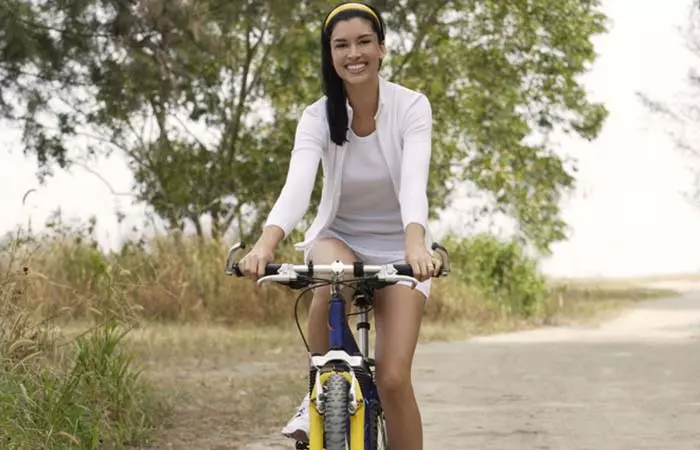
- Go to bed early to wake up early and fresh.
- Have a cup of detox drink as soon as you get up.
- Sneak in a 30 to 45-minute workout if you are a morning workout person.
- Have a filling breakfast before heading out.
- Have your meals on time.
- Keep yourself hydrated by drinking at least 3 liters of water every day.
- Follow an evening workout routine if that’s convenient for you.
- Take a shower or soak your feet in warm water.
- Avoid snacking on junk.
- Switch off all electronics 30 minutes before you sleep.
- Read or write a journal before you go to bed.
Along with following these lifestyle changes, you should avoid certain things on your 7-day South Indian diet to complete it successfully. Learn about them below.
Common Pitfalls To Avoid
While the South Indian diet can be a healthy option for weight loss, there are some common pitfalls to avoid for those aiming to maintain a balanced, nutritious diet. For instance:
- Do not skip your meals, as doing so may lead to overeating later on.
- Practice portion control to prevent overeating and excess calorie intake.
- Opt for home-cooked meals instead of packaged foods, as the latter may include hidden calories and harmful preservatives.
- Limit deep-fried foods and opt for baked, steamed, or air-fried versions of popular South Indian recipes to reduce oil consumption.
Infographic: Tips To Follow South Indian Diet Plan
South Indian cuisine is considered one of the most balanced diets just like the Mediterranean diet and DASH diet plans. Many high-protein South Indian dishes are suitable for your one-week diet plan. However, you must follow or tweak your lifestyle as part of this diet plan. Check out the infographic below to learn some tips that can enhance the effect of your South Indian diet plan. Illustration: StyleCraze Design Team
Pickles, chutneys, dosas, and other divine South Indian dishes make this diet plan worthwhile. This staple Indian diet for weight loss consists of pulses, whole-fat milk, vegetables, eggs, fish, chicken breast, and other wonderful foods, so you get a nice variety of options to try out. But you should avoid deep-fried, processed, sugary, and fatty foods. Before you start this diet plan, you should consult a doctor to check your BMI and BMR and set a weight loss goal accordingly. Remember to keep your weight loss goals realistic and achievable. It is one thing to aim high and push yourself, and another to put your health at risk.
Frequently Asked Questions
Is rice good for weight loss?
Mary Sabat, MS, RD, LD, says, “Rice can be part of a healthy weight-loss plan if eaten in moderation and combined with other nutritious, low-calorie foods. Brown rice, in particular, is an excellent source of fiber and protein and can be a great choice for those trying to lose weight. For optimal weight loss, eating a variety of whole grains, lean proteins, healthy fats, and fresh fruits and vegetables is recommended.”
She recommends that rice be eaten at lunch instead of dinnertime due to its high glycemic load and that a proper portion be measured. Either way, the rice should be served with some protein and healthy fat to avoid spiking insulin too high and subsequently putting the body into fat storage.”
What South Indian drink helps burn fat?
According to Sabat, “There is a south Indian drink that helps burn fat. It is called “kanji,” and it is made from black mustard, salt, and water. It helps burn fat by speeding up the metabolism and breaking down fat molecules. It also helps to improve digestion and reduce bloating.”
What is the best Indian diet for diabetes type 2?
Reducing calorie intake and adding low-glycemic index foods should be the focus. Sabat says, “For those with diabetes type 2, the best Indian diet should focus on reducing overall calorie intake and including a variety of nutrient-rich, low-glycemic index foods. Vegetables, legumes, lean organic protein, nuts, and seeds should be the main focus while limiting rice and high-fat dairy and coconut. I would encourage them to cut fat back to small amounts at each meal and to lean towards healthy fats like avocado, olive oil, avocado oil, coconut oil, Ghee, nuts, and seeds. The same principles that apply for weight loss would apply to a type 2 diabetic.”
Is ragi roti good for weight loss?
Yes, ragi is a rich source of fiber that can boost weight loss and manage blood sugar levels (4), (21). High-fiber diet keeps you satiated that helps in reducing hunger pangs.
Does poha increase weight?
No, poha is a low-calorie and low-fat food that may aid in weight loss (22).
What is better, poha or upma?
Both poha and upma are healthy foods that may help you shed those extra pounds. You can include either or both dishes as per your preference.
Illustration: Healthy 7-Day South Indian Diet Chart For Weight Loss
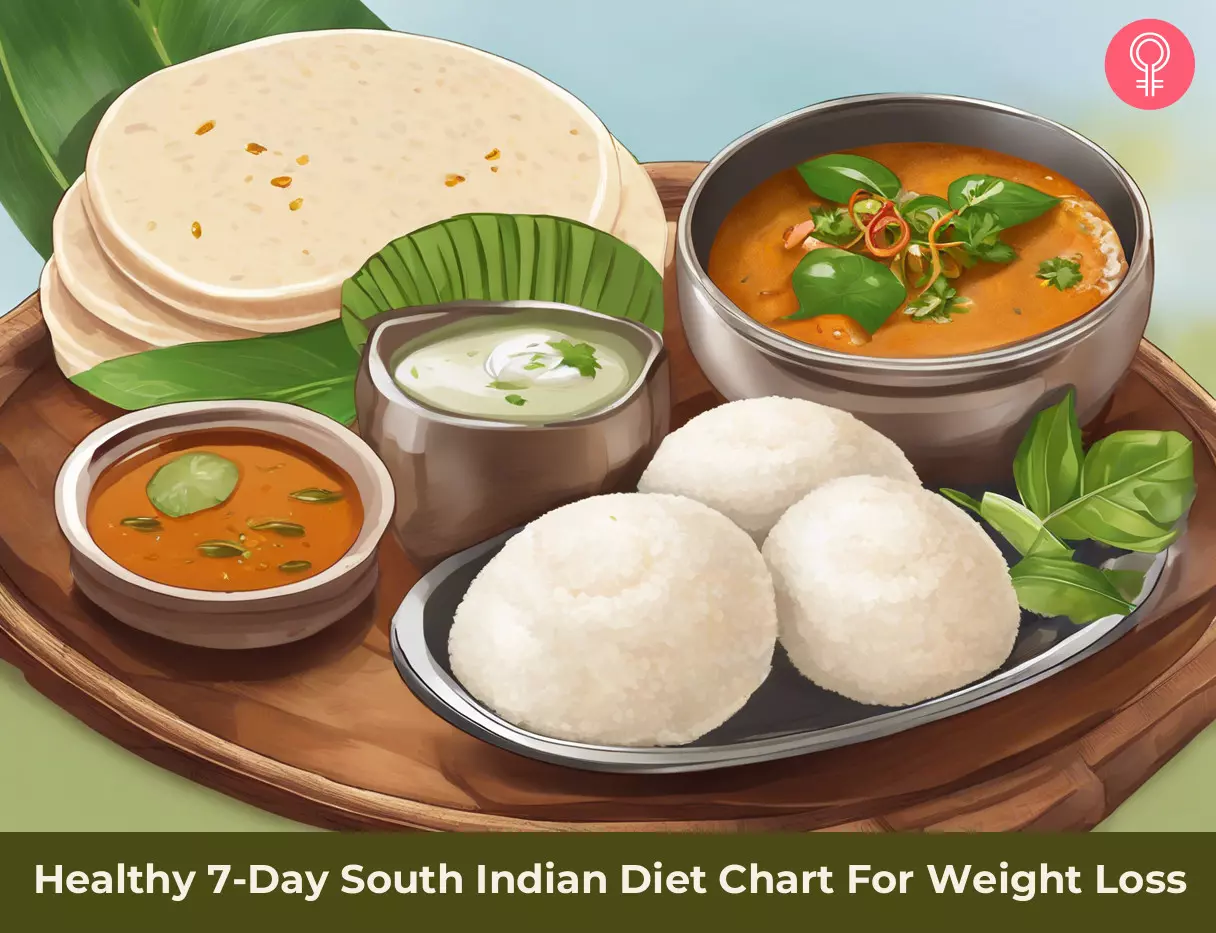
Image: Stable Diffusion/StyleCraze Design Team
Lose those stubborn pounds with this amazing Indian diet. Watch this video to know more about this meal plan to help you get started on your health journey.
Personal Experience: Source
StyleCraze's articles are interwoven with authentic personal narratives that provide depth and resonance to our content. Below are the sources of the personal accounts referenced in this article.
i. I only ate South Indian Food for 24 Hours | Foreigner India Reaction | TRAVEL VLOG IVhttps://www.youtube.com/watch?v=diiqbpA_n5E
References
Articles on StyleCraze are backed by verified information from peer-reviewed and academic research papers, reputed organizations, research institutions, and medical associations to ensure accuracy and relevance. Read our editorial policy to learn more.
- Therapeutic properties of green tea against environmental insults
https://www.ncbi.nlm.nih.gov/pmc/articles/PMC5124528/ - Apples and Health
https://www.researchgate.net/publication/346970878_Apples_and_Health - Health Benefits of Fruits and Vegetables
https://dirhorti.assam.gov.in/sites/default/files/swf_utility_folder/departments/horticulture_medhassu_in_oid_5/portlet/level_1/files/Health%20benifit%20of%20fruits%20%26%20vegetable.pdf - Significance of Finger Millet in Nutrition Health and Value added Products: A Review
https://www.researchgate.net/publication/262732070_Significance_of_Finger_Millet_in_Nutrition_Health_and_Value_added_Products_A_Review - Buttermilk: An Unrevealed Nutraceutical
http://ndpublisher.in/admin/issues/IJFFv7n2f.pdf - Honey and Health: A Review of Recent Clinical Research
https://www.ncbi.nlm.nih.gov/pmc/articles/PMC5424551/ - Nuts almonds dry roasted with salt added
https://fdc.nal.usda.gov/fdc-app.html#/food-details/323294/nutrients - Pharmacology of Caffeine
https://www.ncbi.nlm.nih.gov/books/NBK223808/ - A high-protein diet for reducing body fat: mechanisms and possible caveats
https://www.ncbi.nlm.nih.gov/pmc/articles/PMC4258944/ - Fenugreek (Trigonella foenum-graecum): A Review of Health Beneficial Physiological Effects
https://www.tandfonline.com/doi/abs/10.1080/87559120600586315 - Comparison of coconut water and a carbohydrate-electrolyte sport drink on measures of hydration and physical performance in exercise-trained men
https://www.ncbi.nlm.nih.gov/pmc/articles/PMC3293068/ - Dosa, with filling
https://fdc.nal.usda.gov/fdc-app.html#/food-details/2344617/nutrients - Idli
https://fdc.nal.usda.gov/fdc-app.html#/food-details/2343829/nutrients - Vegetable upma
https://fdc.nal.usda.gov/fdc-app.html#/food-details/567366/nutrients - Jyoti natural foods, Madras sambar
https://fdc.nal.usda.gov/fdc-app.html#/food-details/396231/nutrients - Fruit and vegetable intake and mortality: results from two prospective cohort studies of us men and women and a meta-analysis of 26 cohort studies
https://www.ncbi.nlm.nih.gov/pmc/articles/PMC8084888/ - Protein for life: review of optimal protein intake, sustainable dietary sources and the effect on appetite in ageing adults
https://www.ncbi.nlm.nih.gov/pmc/articles/PMC5872778/ - Effects of dairy products consumption on health: benefits and beliefs—a commentary from the Belgian bone club and the European society for clinical and economic aspects of osteoporosis, osteoarthritis and musculoskeletal diseases
https://www.ncbi.nlm.nih.gov/pmc/articles/PMC4703621/ - Nutrition: macronutrient intake, imbalances, and interventions
https://www.ncbi.nlm.nih.gov/books/NBK594226/ - Nuts and seeds – a scoping review for Nordic Nutrition Recommendations 2023
https://www.ncbi.nlm.nih.gov/pmc/articles/PMC10870978/ - A Review on Role of Millets in Weight Loss
https://www.opensciencepublications.com/wp-content/uploads/IJN-2395-2326-8-236.pdf - Effect of truweight weight-loss program on weight reduction among clients in 10 days and one-month
Program
https://possible.in/wp-content/uploads/2020/11/Effect-of-truweight-weight-loss-program-on-weight-reduction-among-clients-in-10-days-and-one-month-program.pdf
Read full bio of Merlin Annie Raj
- Mary Sabat, MS, RDN, LD, is a registered dietitian and a certified in personal training by the American Council of Exercise. She has 30 years of experience in nutrition education, wellness coaching, fitness training, holistic health, and weight loss coaching. She obtained her bachelor's degree in Dietetics and Nutrition from the University of Delaware and master’s degree in Human Nutrition with an emphasis on Exercise Science from Rutgers University.
 Mary Sabat, MS, RDN, LD, is a registered dietitian and a certified in personal training by the American Council of Exercise. She has 30 years of experience in nutrition education, wellness coaching, fitness training, holistic health, and weight loss coaching. She obtained her bachelor's degree in Dietetics and Nutrition from the University of Delaware and master’s degree in Human Nutrition with an emphasis on Exercise Science from Rutgers University.
Mary Sabat, MS, RDN, LD, is a registered dietitian and a certified in personal training by the American Council of Exercise. She has 30 years of experience in nutrition education, wellness coaching, fitness training, holistic health, and weight loss coaching. She obtained her bachelor's degree in Dietetics and Nutrition from the University of Delaware and master’s degree in Human Nutrition with an emphasis on Exercise Science from Rutgers University.
Read full bio of Arshiya Syeda
Read full bio of Aparna Mallampalli







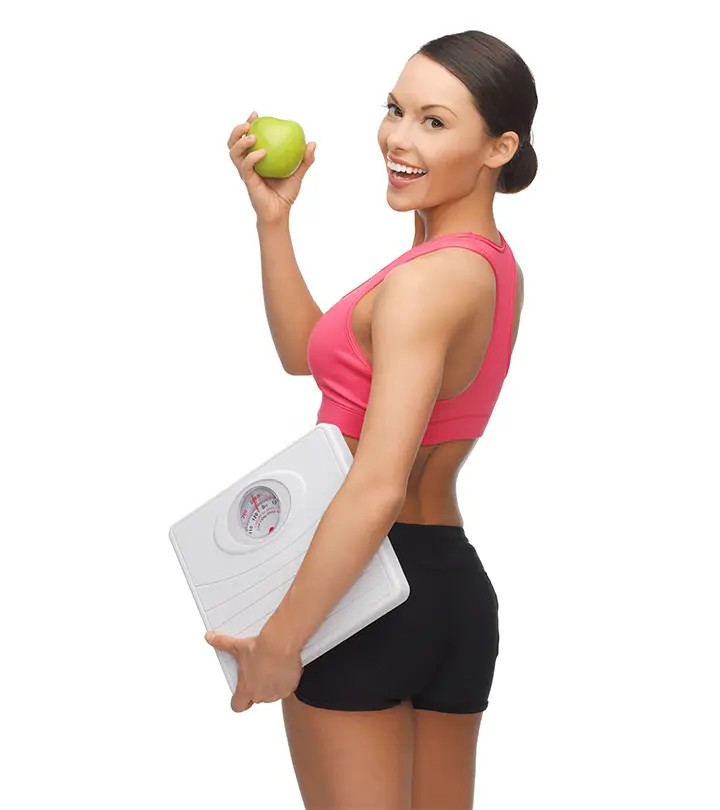
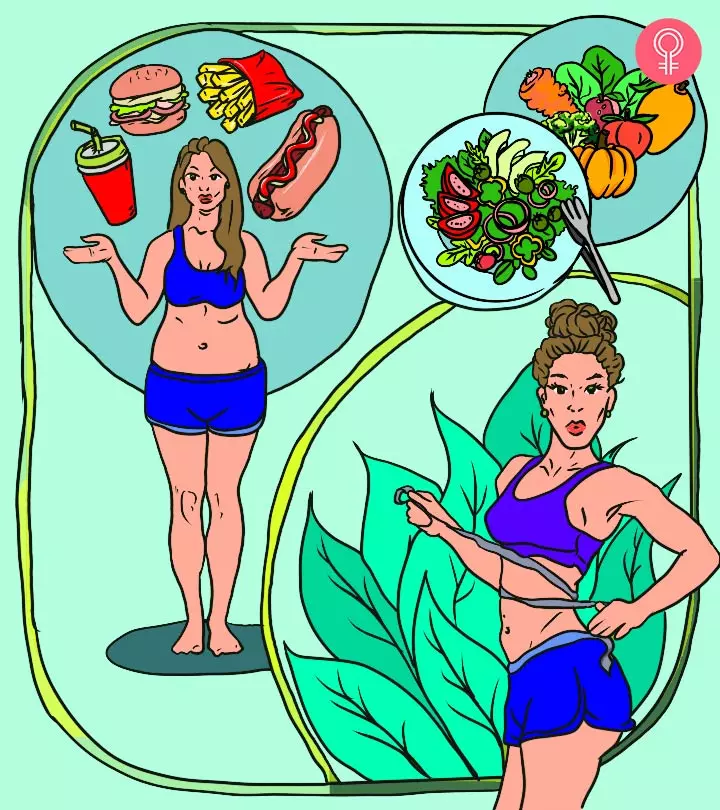
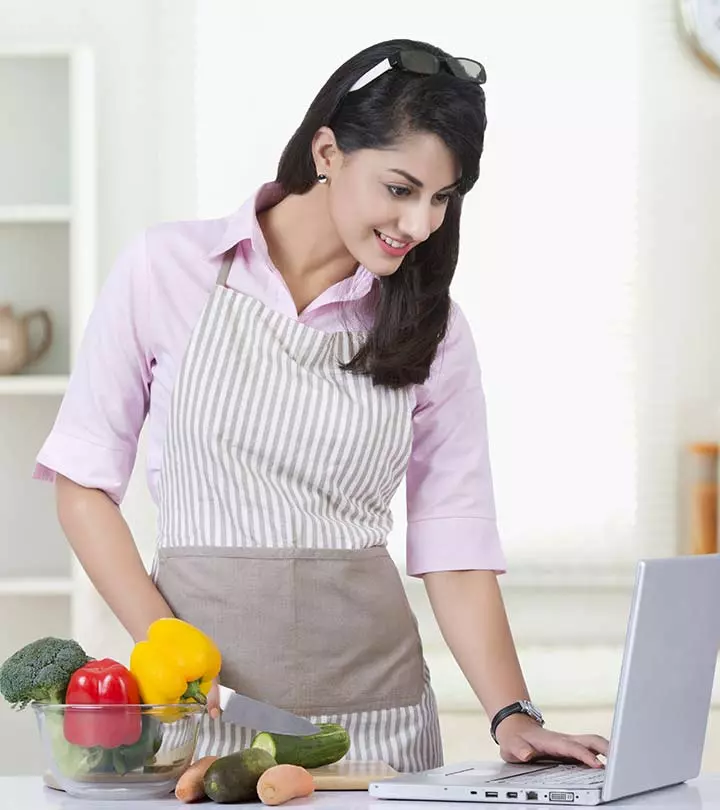
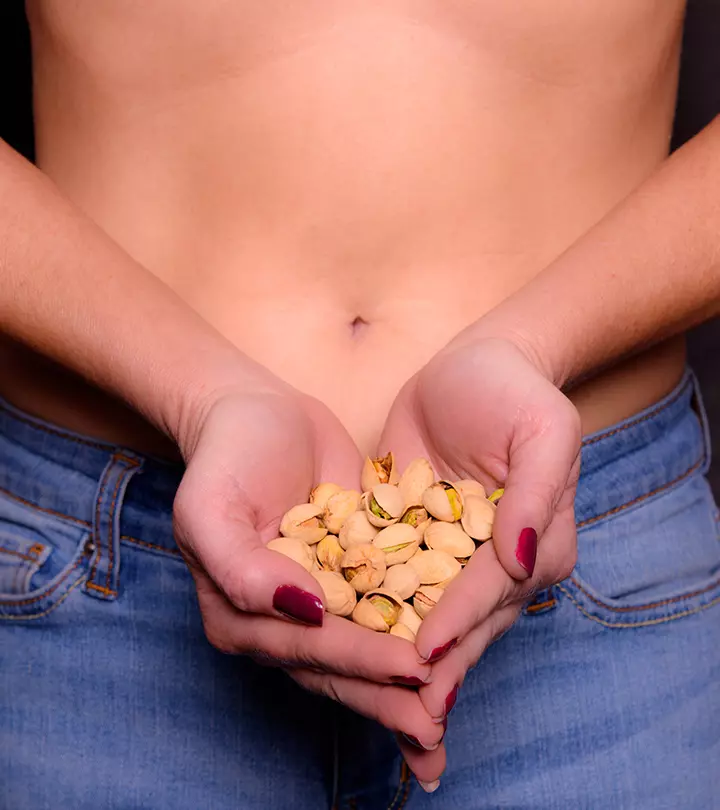
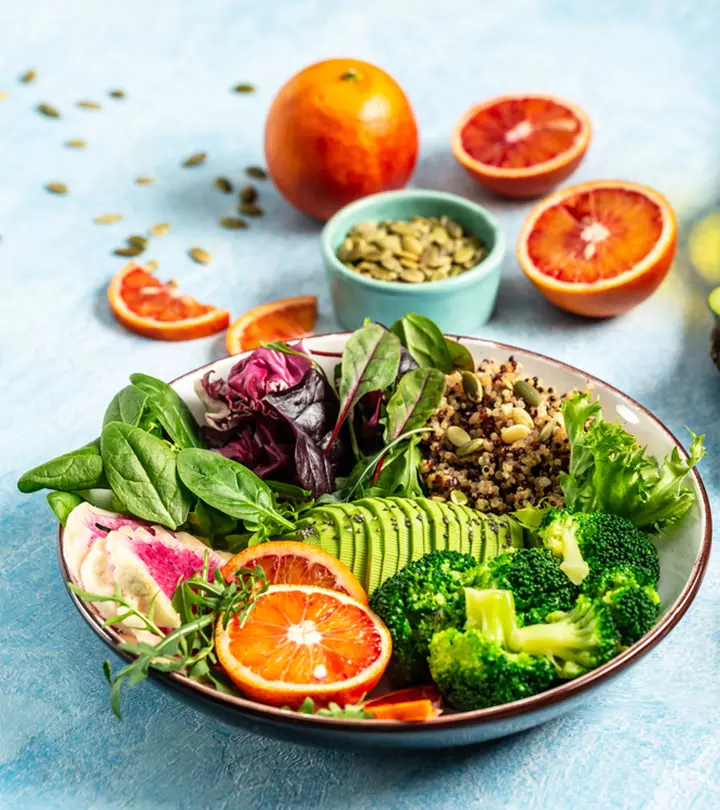

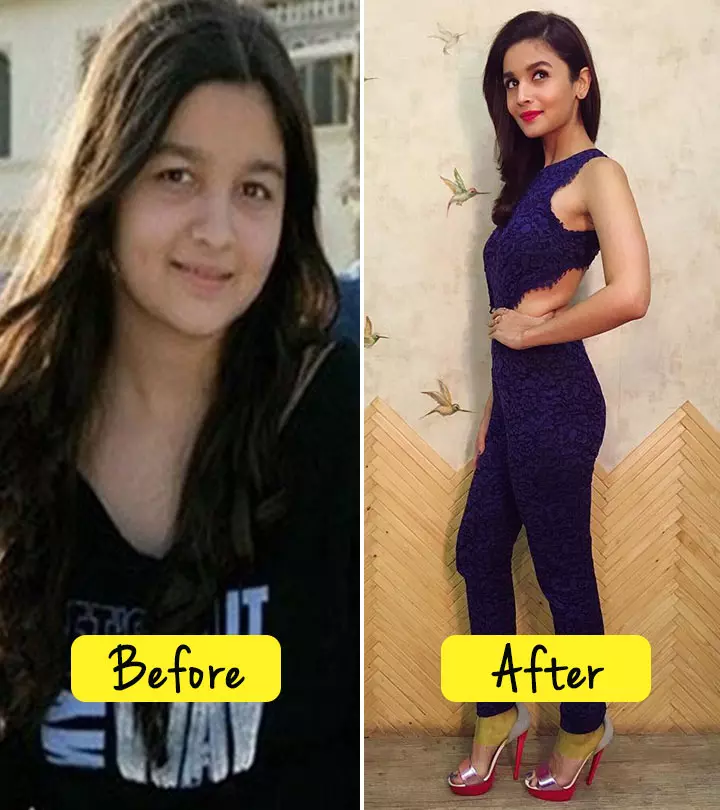
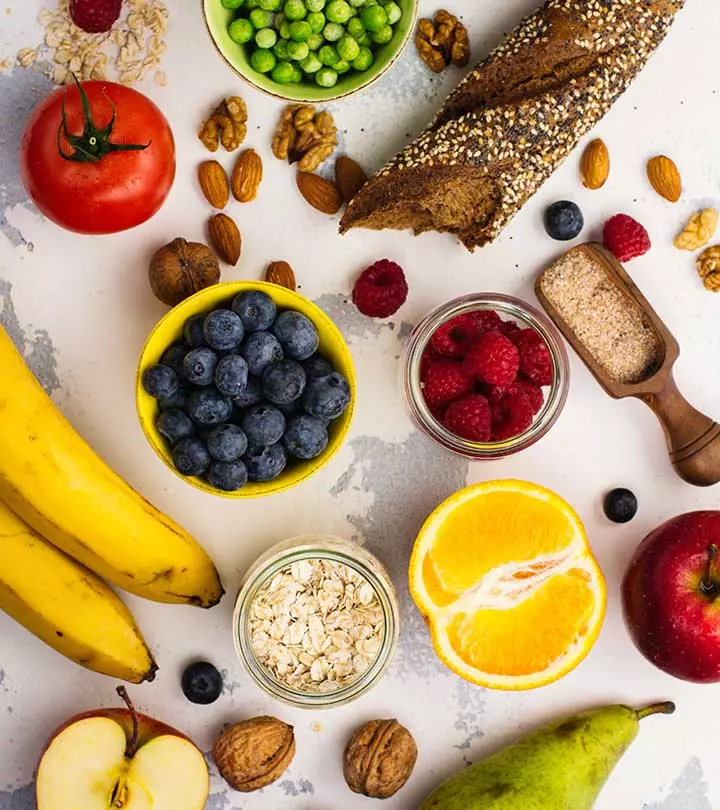






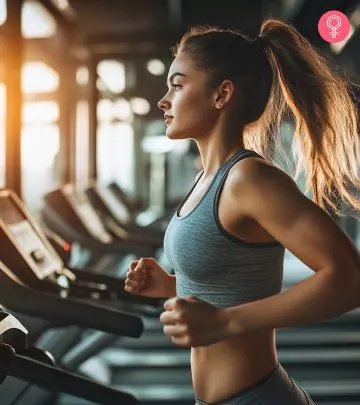

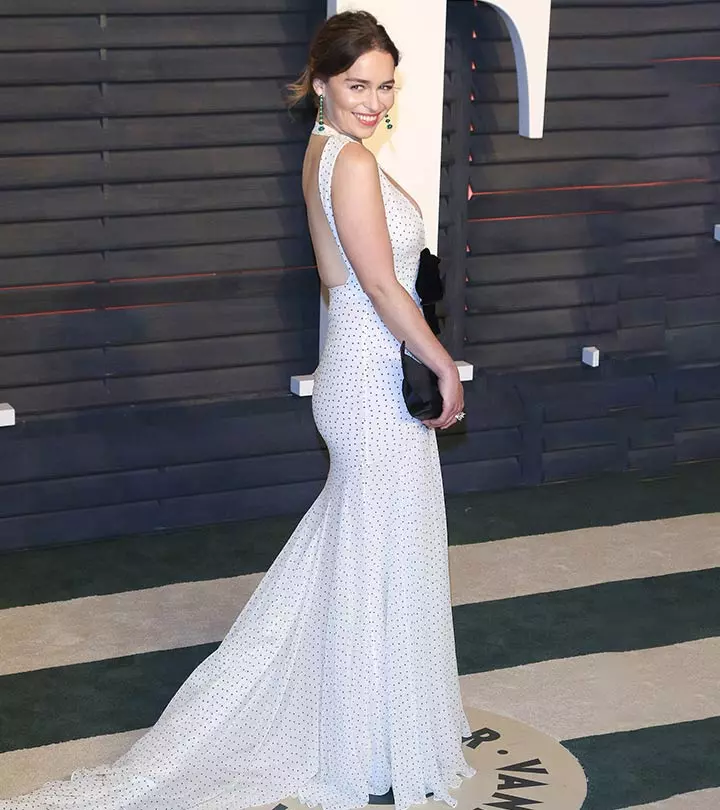



Community Experiences
Join the conversation and become a part of our empowering community! Share your stories, experiences, and insights to connect with other beauty, lifestyle, and health enthusiasts.